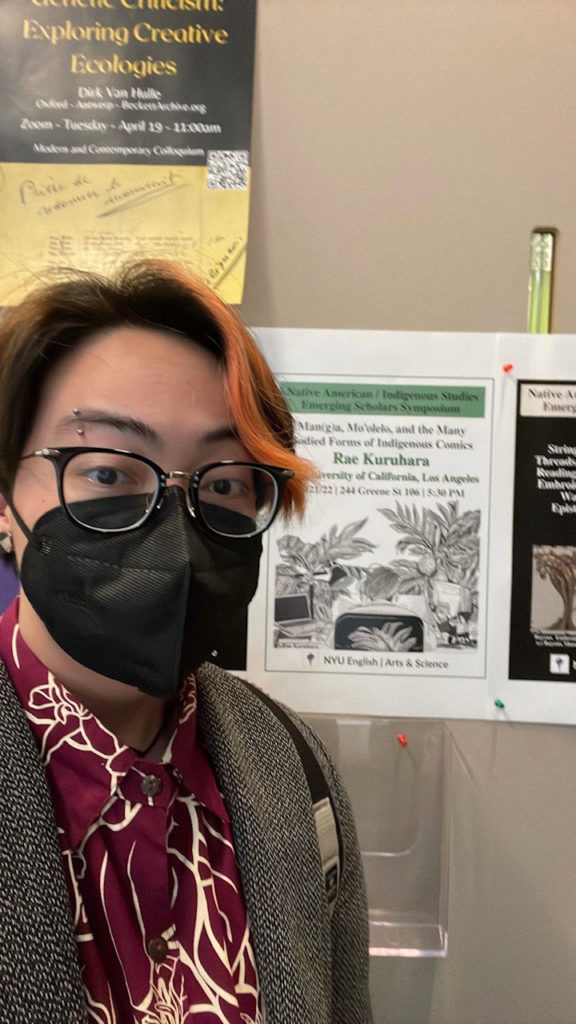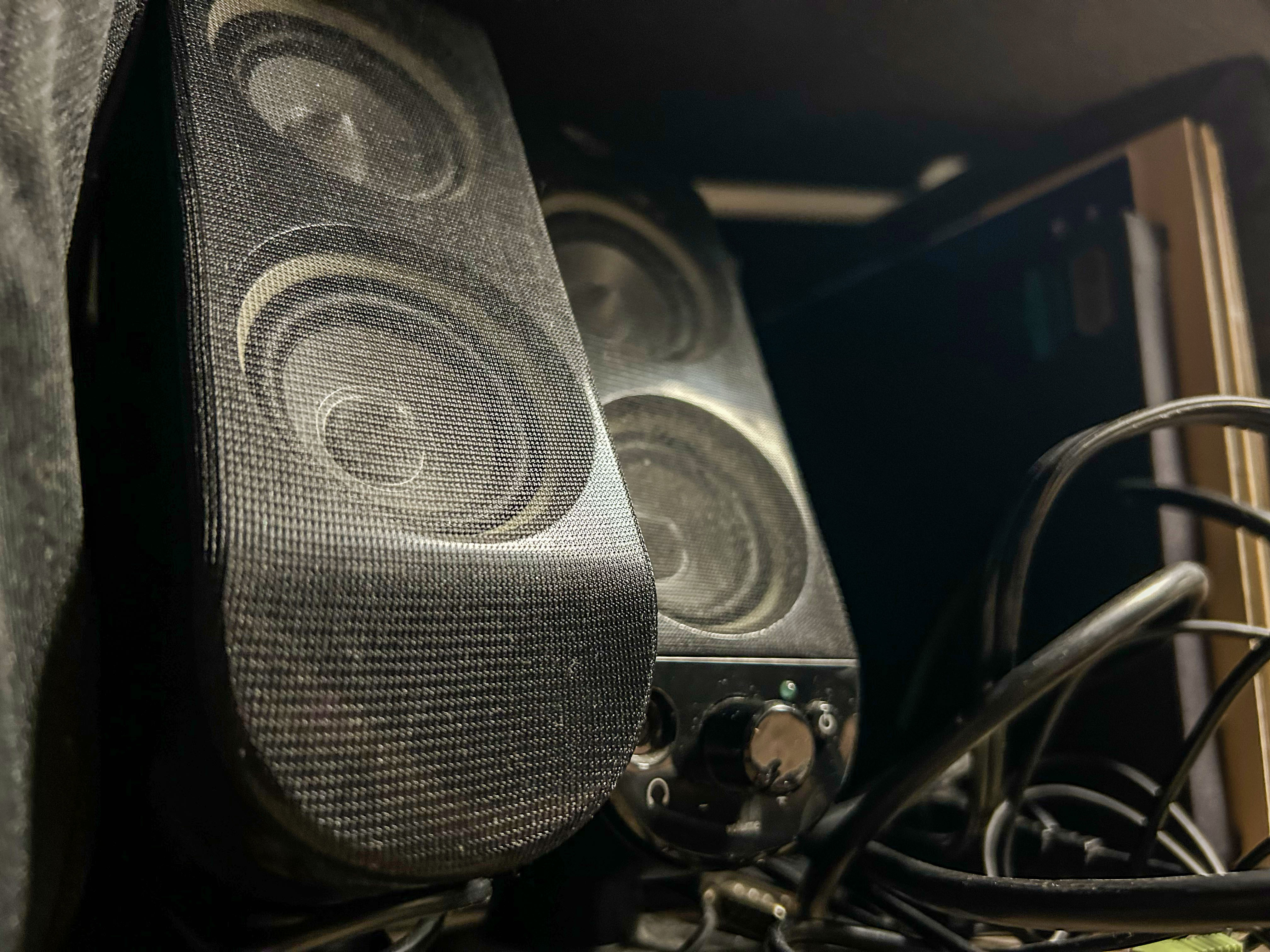Doctoral student Rae Kuruhara illustrates Indigenous representations in comics

A comic that doctoral student Rae Kuruhara drew as part of an academic dissertation is pictured. (Courtesy of Rae Kuruhara)

By Dylan Winward
July 14, 2023 4:34 p.m.
This post was updated July 16 at 5:37 p.m.
After being disillusioned with their undergraduate education at the University of Hawai’i at Mānoa, Rae Kuruhara was ready to quit school. Deciding to give school one more try, they decided to focus on what they enjoy most and see where it took them – comics.
“I want to be the best comic manga reader expert in the world,” Kuruhara said.
Kuruhara, who also received a master’s from Brown University and is now an English doctoral student at UCLA, said that although they just started working on their dissertation, they already know they intend to write it as a graphic novel.
Kuruhara said they were first inspired to do this when they realized they are better at thinking pictorially than verbally.
“I sometimes have a difficult time thinking in just words,” Kuruhara said. “What I would do for my undergraduate papers is, if I was in a writer’s block, I would start doodling my ideas. And eventually, the doodles turned into entire papers in which I just drew the whole paper without actually writing anything.”
Today, those same doodles have won Kuruhara one of the most prestigious awards in the doctoral humanities.
Earlier this year, Kuruhara was awarded a Mellon/American Council of Learned Societies Dissertation Innovation Fellowship to study Indigenous representations in graphic novels. The inaugural $50,000 award, which was awarded to 45 candidates out of over 700 applicants, seeks to recognize project formats that are outside of academic convention, according to an emailed statement from Alison Chang, ACLS’s program officer for United States Programs.
Kuruhara said the inspiration to study Indigenous comics first came through their experience exploring their self-identity. They said that while growing up, they struggled with their Hawaiian identity because drawing comics was perceived by their peers as more of a Japanese practice.
Kuruhara added that it was not until later that they realized the connection between their love of comics and their heritage.
“There are so many different ways in which colonization, and things like that, have kind of siloed us into performing Indigeneity in different ways,” they said. “At the very core of it, I know that my people were storytellers. … Just because my medium is a little bit more modern or different does not mean that it’s not legitimately Indigenous or rooted in a long, long, long history.”
However, it was while grappling with reconciling their love of comic books with their Hawaiian heritage that Kuruhara said they first wondered about the lack of Indigenous representation in graphic novels. They added that they hope to explore ways of telling Indigenous stories through graphic novels in a way that prioritizes Indigenous storytelling practices rather than simply recasting them through European or Japanese lenses.
Rachel Lee, a professor of English who helps supervise Kuruhara in their dissertation, said graphic novels serve as an exciting opportunity for retelling Indigenous stories.
“The form of the graphic novel, Rae argues, is really good at representing … Indigenous songs, chants, folklore, myths, stories, history,” she said.
Another aspect of Kuruhara’s work focuses on telling multisensory stories. They said that while they were studying the importance of onomatopoeia – or words that convey sounds by mimicking them – in manga, they came across a book by Hsuan L. Hsu discussing the importance of smell in Indigenous storytelling.
Kuruhara added that although many cultures focus heavily on sounds, smell is a more important sense for Native Hawaiians. While studying Hsu’s book, Kuruhara wrote a separate dissertation in the form of a graphic novel about their experience researching the importance of smell in Indigenous storytelling.
They added that making graphic novels convey certain smells could allow them to better represent culturally important phenomena to Native Hawaiian people, such as the smell of sandalwood trees, which were driven to near extinction by colonial overfarming.
“Different stories and chants would say that as people would travel from island to island, they could smell the wood from miles away, so that they knew they were getting close to the different islands,” they said. “That doesn’t exist anymore.”
Kuruhara also said the importance of smell in literature has been particularly important in allowing them to reconnect with their Hawaiian name of Keʻala, which directly translates to fragrance, adding that they were bullied for the name as a child.
Cristobal Silva, another professor of English who is supervising Kuruhara’s graduate studies, said smell is an important factor in pursuing accurate Indigenous storytelling.
“In order to tell a proper history of Hawaii, one had to think about smell and the smell of the island and the relation between smell, place and history,” he said.

Kuruhara said their final dissertation will focus on retelling the story of an early 20th-century oral history. They added that the story describes a Hawaiian family that evaded colonial attempts to deport them to a leper colony during the leprosy epidemic in Hawaii, which lasted from 1860 to 1910.
While the story is important to tell, it can be challenging to faithfully and accurately represent cultural landscapes that no longer exist, Kuruhara said.
“Because of decades of colonialism and settler colonialism and environmental degradation, these places don’t exist anymore in the way that they did,” they said. “For me, it comes down to, ‘How do I responsibly recreate these environments?’”
Kuruhara also said that while graphic novels offer many opportunities, there are also significant challenges when it comes to world building. Considerations about setting, continuity and appearances lead to a heavy research burden when trying to accurately depict historical settings, they said.
“Manga is much more detailed when it comes to creating immersive environments, and maybe Western comics are (too), but that’s just the lineage that I learned how to make comics in,” Kuruhara said.
Silva said that creating a graphic novel was a dissertation method that he had never seen before. He added that while advising such an innovative method can be challenging, he is excited about the possibilities it might uncover for future students.
“The kind of the language of analysis is not really developed in the way that a critical essay is,” he said. “One of the benefits of that kind of work is it allows for really new and intellectually creative ways of thinking about material.”


